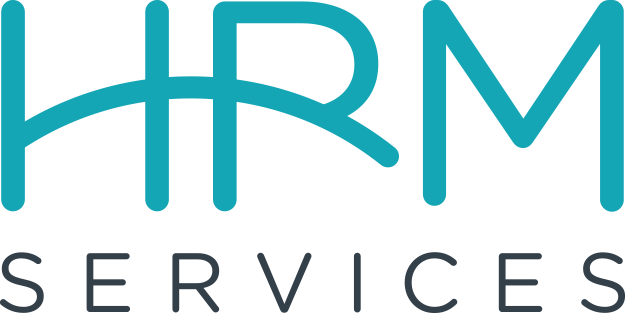
Welcome to September’s edition of HR hot topics!
During the last two months, I’ve been able to talk about topics that aren’t COVID related – it was like a personal victory in my HR world. However, for September, we’re back at it. The Delta variant is something that can’t be ignored, incredibly contagious, and sweeping across the nation. Michigan is not immune to that and certainly neither is your workplace. Now that school’s back in session, it’s probably going to hit us on a couple of fronts.
Today, I want to talk about new guidance that has recently come out from the Federal OSHA Agency. It’s important to note that we’re talking about guidance, not requirements, and it’s being referred to as Mitigating and Preventing the Spread of COVID-19 in the Workplace.
I want to talk first about those of your staff who are vaccinated and some of the guidance around that. The first strategy is to encourage vaccination whenever possible. Some employers have gone so far as to mandate vaccination. That’s actually happening more and more, especially since the FDA has now given final approval of the Pfizer vaccine. And from what I’m hearing in the news, Moderna is probably about 30 days behind Pfizer, and that just has to do with when the paperwork was submitted. I’m not sure if Johnson and Johnson is going to go for full approval or not.
So Pfizer has been fully approved and we’re seeing employers in various industries starting to mandate vaccines. So far, those mandates are being upheld by the courts. Some of these have gone to the Supreme Court level – the Supreme Court was involved in the early 1900s with smallpox vaccinations and granting as well as making it legal to require vaccinations for kids to attend public schools. So the Supreme Court has touched on this a couple of different times in our fairly recent history and the federal courts at this point are continuing to uphold these employer mandates. I’m seeing more and more clients start to move in this direction. And that’s one of the strategies the recent OSHA guidance is pushing again, recommendations, not requirements.
Another recommendation that has to do with vaccines and your vaccinated staff is that, unfortunately, the Delta variant is highly contagious, and even if you’re fully vaccinated, you can still contract COVID-19. The vaccine is highly effective against preventing serious illness, hospitalization, and death. So while you can contract it and potentially spread it and pass it to someone else, the vaccine is still going to do its job to keep you safe in almost all cases. But, because of the ability to contract and spread the illness, this new OSHA guidance says if you’re in a public place in a community that has elevated or substantial risk of spread, you should probably be wearing a mask. So in your workplaces, that might be something you consider bringing back. This is not a mandate yet – this is just simply guidance, but you might consider it for both vaccinated and unvaccinated staff.
Another piece of guidance that falls in line with some things that we were doing earlier in the pandemic is creating social distancing whenever possible and offering remote work if possible. I just recently talked about making sure we have good personal hygiene and that we’re disinfecting workspaces. All of this is reiterated in this new Federal OSHA guidance, and may be something you never stopped doing. If you had those COVID-19 preparedness and response plans that all employers used to be required to have, just because the requirement went away doesn’t mean that those best practices should have been scrapped. So maybe you’ve been following along with that up until now, and you can continue to do so. After all, the CDC and federal OSHA is encouraging you to do so.
One other note on your fully vaccinated staff, if there’s an exposure in your workplace, folks who are fully vaccinated still don’t have to quarantine. This is the CDC’s guidance and OSHA is mirroring what the CDC has currently said. You don’t have to quarantine, but what the CDC is saying is that you should get tested three to five days after exposure to make sure that you didn’t contract COVID yourself, and then inadvertently pass it on to somebody else.
So the testing piece is new, and we should be doing that if we’ve been exposed, even if we’re fully vaccinated. The CDC is also recommending that even if you’re fully vaccinated but have been exposed, you should be wearing a mask for the next 14 days until you know for sure whether or not you’ve contracted it. So, this is the fully vaccinated side of things. Obviously, if you’re un-vaccinated, your risks are much higher. Regardless, mask wearing is heavily encouraged. Maybe as an employer, you’re requiring this already. I’ve seen some employers also require testing for their non-vaccinated staff. They haven’t gone so far as to mandate the vaccine, but they put some mitigation strategies in place to help minimize risk in the workplace, especially with those un-vaccinated folks.
The masking and testing are two strategies that I’ve seen quite a bit recently, and you’re fully within your rights to do that. One other note I want to make here is in regard to the Families First Coronavirus Response Act. This was part of the American recovery plan – one of the stimulus bills that was passed initially under the Trump Administration and then there was another iteration that came out under the Biden administration – it’s that plan that allowed for people that are out for COVID-related reasons to still get paid wages. Then, employers could recoup those dollars, dollar for dollar, in terms of an offset to your federal payroll tax liability.
In essence, the federal government was going to pick up the tab on that. It was a requirement up through 2020 and then became optional. So, if you’ve been offering that to your staff and following along with those rules, you can continue to do so up until the end of this month. That tax credit expires the end of September. Something to just keep an eye on.
I know many of you are struggling with hiring and we’re hoping for an influx of talent to the labor pool. I don’t know yet whether or not having that federal subsidy go away will be incentive enough to push people to the workplace or not, or push them to the jobs that you’re looking to hire for or not.
This federal OSHA guidance is something that you should all be taking a look at, and keep in mind that it does align with CDC recommendations at this point in time.
If anything changes, we’ll make sure to note that for all of you. As always, if you have any questions, you can reach me directly at jodischafer@workwithhrm.com. Until then, stay safe, stay diligent, and I’ll see you next time!

